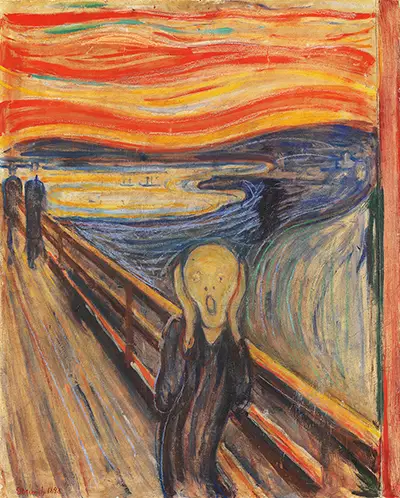There will likely never be anywhere better to enjoy the work of Edvard Munch than at his own purpose built museum in Oslo, the Munchmuseet.
The museum itself initially opened in 1963 in order to mark a century since the artist's birth, but recently it has relocated to a brand new location. It was deemed necessary to construct a purpose built building in order to best show off the huge collection that was gifted to the nation by the artist himself upon his death. Those looking to research the artist's life will find an extraordinary collection of over 2,000 publications here from a variety of sources. There are also around 1,200 paintings which spearhead the collection and provide the key highlights which help this venue continue to attract hundreds of thousands of tourists each and every year.
Norway considers Munch to be perhaps their greatest cultural export and so it makes complete sense to locate his work in Oslo and also to promote the venue significantly. It has helped to draw tourists to the city, seeking to learn more about one of the most important expressionist artists of the 19th and 20th century. To find so much of his work under one roof would prove tempting enough to attract fans from all over the world, and the region has the added advantage of allowing visitors to understand more about the various towns in which he worked, as well as the truly unique Norwegian landscape. This was a key element to his work, as well as the climate, and so to visit the country and experience it, along with so much of his work, is an exciting prospect.
The switch to a new venue has allowed the Munch Museum to expand its services to visitors and turn itself into a more rounded cultural venue. There are now regular events and activities and there is also a good variety of other artistic pursuits carried out here all year round. It is now more of an expressive area that creative people can celebrate their own ideas within, rather than just being a showcase of Munch's work as it was initially. The artist's work was fairly contemporary in style, and so it makes entire sense that the Museum devoted to his career continues to evolve and keep up with modern trends and activities. It has also become a key cultural hotspot for those visiting the city of Oslo and so its services were understandably expanded to benefit from the profile of this huge art figure.
Whilst the quantity of its collection is impressive, it is important to remember that the Museum also holds many of the artist's highest profile artworks, such as Madonna and one version of The Scream. They have since added other artists too, such as Rolf Stenersen, Amaldus Nielsen and Ludvig O. Ravensberg who were all notable Norwegian artists whose collections were donated by private individuals and their own careers considered worthy of inclusion within this venue. Besides the Munch artworks themselves, there are also many photographs and diaries that have given us all so much additional knowledge about the artist's life. It is hard to imagine Munch's name being quite so well known worldwide without the continued efforts of this fantastic museum who retain their relevance all these years later. His contemporary and expressive style is well suited to today's world and his work has also inspired many of today's greatest artists.
The original plan for the new building was created in 2008 as part of a competition between different architectural practises. After several years of political discussions and disagreements, the plans were eventually commenced in 2015. It took around five years to complete and much of the previous problems were around the financing and also whether or not to just expand the existing site or perhaps move the collection into the Norwegian National Gallery. After many changes of mind, the project was thankfully completed and the venue sits proudly on the Oslo waterfront, close to the Opera House. It has achieved an increased footfall since the collection moved to this new location and the architecture itself has also added an additional element to the cultural aspect of this fine city. It is rare to find venues of this size devoted to a single artist, but this reminds us of Munch's artistic significance to the people of Norway as well as his considerable international appeal.
Whilst donating the collection willingly to the nation upon his death, the artist did not make any attempt to actually prepare the transfer of ownership in terms of documenting his work or even storing it together in the same place. For example, when his various artworks were collated together, some were found within his home, others in various studios, even outbuildings. Incredibly, there were even completed artworks found within his garden, and thankfully all of these items were collected up, documented and have since been preserved to a high level in order to protect them for future generations to appreciate. He remains a huge cultural figure within Norway and new generations continue to learn and enjoy his work which both promotes the qualities of their nation but also draws attention to the unique landscape of this region. Munch's oeuvre also pays attention to some of the negative elements of the human mind that today are very much in discussion.







